Table of Contents
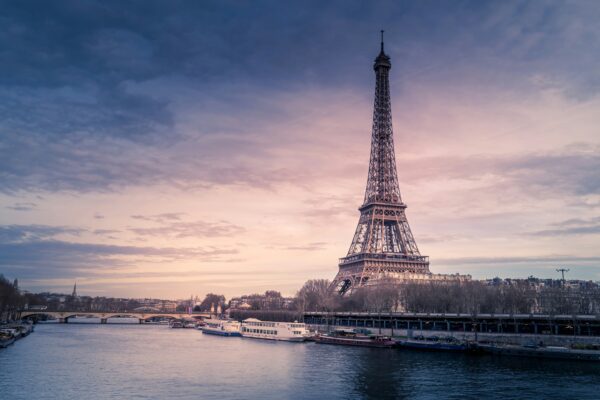
Embarking on your first France travel journey is an exciting step into a world of rich culture, breathtaking landscapes, and unforgettable experiences. For first-time visitors, planning is everything. From understanding seasonal trends to deciphering transportation options and cultural norms, every detail counts. France travel starts with choosing the right time to visit.
Spring (April to June) and fall (September to November) offer the best weather and fewer crowds. Booking flights at least three months in advance often secures the best deals. Make sure your passport is valid for at least six months beyond your travel date. Apply for a Schengen visa early and ensure your travel insurance meets all necessary criteria.
When it comes to accommodation, first-time visitors to France travel best when they opt for centrally located hotels or Airbnb rentals. Look for accommodations near metro stations in Paris or within walking distance to major landmarks. This not only saves money but also provides a local experience.
Booking platforms like Booking.com and Airbnb offer transparent pricing and reviews that help you make informed decisions. Remember to check cancellation policies and hidden fees before confirming your stay. Understanding this part of France travel planning is crucial to avoid last-minute issues and ensure a comfortable trip.
France travel tips for first-time visitors should always include budgeting essentials. France can be expensive, especially in cities like Paris and Nice. Allocate daily budgets for food, transport, and sightseeing. Most museums and attractions offer discounted or free entry on the first Sunday of the month. Purchase a city pass like the Paris Pass or Lyon City Card for bundled access to popular attractions.
Public transport is efficient and affordable, so consider purchasing multi-day passes for metro and buses. Keeping track of expenses with travel budgeting apps can help manage your finances smartly throughout your France travel experience.
France travel tips for first-time visitors must also focus on packing right. Pack clothing based on the season, but always carry a light jacket as weather can be unpredictable. Comfortable walking shoes are a must, especially for cobblestone streets and extensive sightseeing. Bring a universal adapter for your electronics, as France uses type C and E plugs.
Don’t forget essentials like prescription medications, sunscreen, and reusable water bottles. A compact umbrella and a daypack can make your day trips more manageable. Being prepared with these France travel essentials ensures a smooth and enjoyable journey.
Navigating French airports and train stations is another crucial France travel tip. France has an extensive rail network connecting major cities and regions. The SNCF trains and high-speed TGV lines offer quick and comfortable travel. Booking tickets online in advance can save both time and money.
First-time visitors often find the language barrier challenging, but downloading translation apps and learning a few basic French phrases can be incredibly helpful. Transportation within cities is well-organized, and metro maps are available in English. Following these France travel tips for first-time visitors ensures you move around efficiently and confidently.
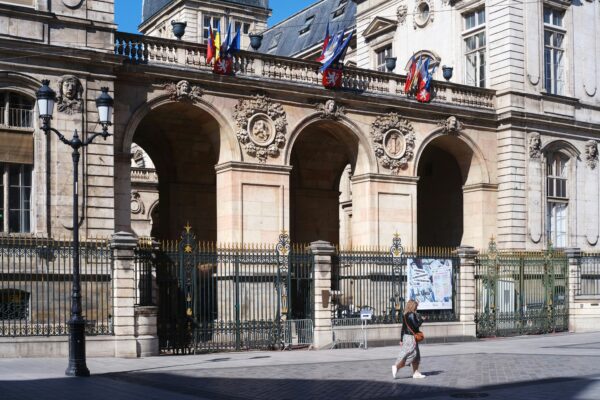
Cultural Etiquette and Local Insights for France Travel
Understanding cultural etiquette is vital for a successful France travel experience. The French value politeness and personal space. Always greet with a “Bonjour” before starting a conversation, whether you’re asking for directions or entering a store.
First-time visitors to France travel more comfortably when they acknowledge local customs. Dining etiquette is also important. Keep your hands on the table, avoid speaking too loudly, and always wait for everyone to be served before eating. Tipping isn’t mandatory in France, but a small gratuity for good service is appreciated.
Public behavior is generally more formal than in some other countries. Loud conversations or public displays of affection may be frowned upon in certain settings. First-time France travel tourists should be aware that punctuality matters in business or formal settings.
Address people with “Monsieur” or “Madame” unless invited to use their first name. Learning a few French phrases not only helps with communication but also shows respect for the culture. Carrying a phrasebook or language app can be a lifesaver. These France travel tips for first-time visitors will help you blend in and avoid cultural faux pas.
French fashion tends to be understated but elegant. Tourists who wish to avoid standing out should opt for neat and comfortable outfits. Sneakers and loud clothing might label you as a tourist instantly. For France travel, especially in cities like Paris, dressing modestly and fashionably is recommended.
When visiting religious sites, cover your shoulders and avoid short skirts or shorts. First-time visitors should remember that smoking is more common in France, especially at cafes, so be prepared for outdoor seating where smoking is allowed. Knowing these aspects of French life adds depth to your travel experience.
France travel also involves adapting to local meal times and business hours. Lunch is typically served between 12 PM and 2 PM, and dinner starts around 7:30 PM or later. Many stores close between 12 PM and 2 PM for lunch, particularly in smaller towns.
Sundays are often a day of rest, with many establishments closed. Plan your shopping and sightseeing accordingly. Supermarkets and pharmacies may also close early, so stocking up in advance is wise. These scheduling quirks are an essential part of France travel tips for first-time visitors.
Safety is another important concern. France is generally safe, but petty crimes like pickpocketing are common in tourist-heavy areas. Always keep an eye on your belongings, especially in crowded metro stations and attractions like the Eiffel Tower or the Louvre.
Avoid carrying large amounts of cash and store valuables in hotel safes. Scams targeting tourists do exist, so be cautious if someone tries to distract you or ask for donations. Travel insurance that covers theft and emergencies provides peace of mind. These practical France travel tips for first-time visitors can protect you and your belongings.
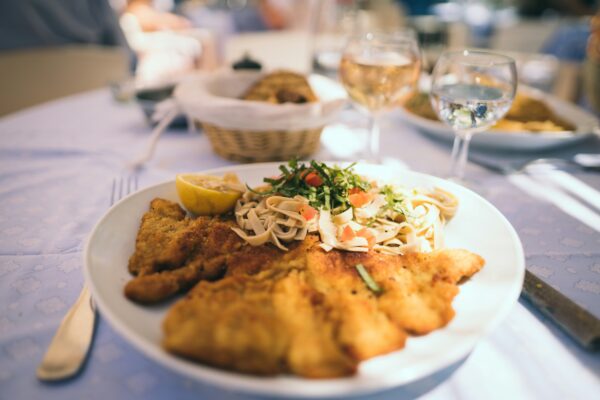
Discovering French Cuisine and Dining Secrets
French cuisine is an essential part of any France travel adventure. From fresh baguettes to gourmet cheeses and delectable pastries, the country’s culinary delights are irresistible. First-time visitors should indulge in local specialties such as croissants, escargot, coq au vin, and crème brûlée.
Each region has its unique flavors—Provence is known for herbs and olive oil, while Burgundy offers rich wines and beef stews. For an authentic France travel food experience, consider dining at local bistros rather than touristy restaurants. Always check reviews on Google or TripAdvisor to ensure quality and pricing.
France travel tips for first-time visitors include embracing the dining culture. Meals in France are slow and meant to be savored. Don’t expect to rush through lunch or dinner. Many restaurants offer prix fixe menus that provide a complete meal at a reasonable cost.
Water is usually served upon request, and tap water is safe to drink. Wine is a staple, often cheaper than soda, and served even during lunch. Trying local wines enhances the dining experience. First-time France travel tourists should also try visiting a local market. These vibrant spaces offer fresh produce, meats, cheeses, and a glimpse into everyday French life.
For vegetarians or those with dietary restrictions, communication is key. Learn the French terms for your dietary needs and ask the server before ordering. Many restaurants accommodate vegetarian diets, but vegan options can be limited outside major cities.
Mobile apps like HappyCow can help locate suitable eateries. Street food is also an excellent part of France travel. Try crepes, falafel, or roasted chestnuts while strolling through city streets. Sampling food on the go allows you to taste a variety of flavors without breaking the bank. These dining insights are invaluable France travel tips for first-time visitors.
Breakfast in France is usually light—expect coffee and a pastry rather than a full meal. Many tourists find this surprising, but adapting to local norms enriches your experience. Cafes are integral to French culture, and people-watching while sipping espresso is a popular pastime.
Tipping is not compulsory but appreciated; rounding up the bill or leaving 5–10% for excellent service is sufficient. Dining is not just about food; it’s a social event. Respecting this aspect of France travel allows for a more authentic experience. These France travel tips for first-time visitors elevate your culinary journey.
Cooking classes and food tours offer deeper engagement with French cuisine. These experiences are especially rewarding for first-time France travel tourists who wish to bring home more than souvenirs. You can learn to bake authentic French pastries, make wine pairings, or prepare traditional dishes.
Many tours include visits to vineyards, cheese farms, or local bakeries. Booking these in advance is recommended. These hands-on opportunities deepen your understanding of French food culture and leave you with lifelong memories. Among the top France travel tips for first-time visitors, indulging in the local food scene is both delicious and enlightening.
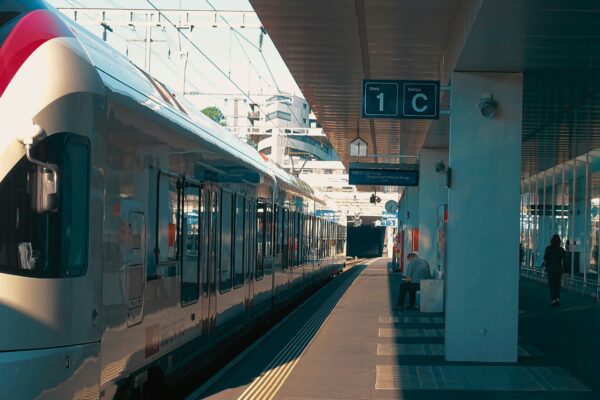
Essential Transportation and Money-Saving Hacks
Getting around efficiently is one of the top France travel tips for first-time visitors. France boasts a highly developed public transport system. Within cities, metros, buses, and trams provide extensive coverage. In Paris, the metro is the most convenient way to travel.
Purchase a carnet (bundle) of ten tickets or a Navigo pass for unlimited weekly travel. These options are cost-effective and widely used by locals. First-time France travel tourists should download transport apps like Citymapper or RATP to plan routes and check schedules. These tools simplify navigation and reduce travel stress.
For intercity travel, trains are your best bet. The SNCF network connects major cities and towns efficiently. Booking TGV tickets in advance through the official SNCF site or apps like Trainline can save money. First-class seats are often affordable if booked early.
Consider a France Rail Pass if you plan to visit multiple cities. Bus services like FlixBus and BlaBlaBus offer budget alternatives, especially for longer routes. Domestic flights are available but usually unnecessary unless covering large distances. These France travel tips for first-time visitors help you choose the best transport method for your itinerary.
Car rentals are ideal for exploring rural France or regions like Provence and the Loire Valley. Remember that cars in France are often manual transmission, so request automatic if needed. GPS or smartphone maps make navigation easy, but be aware of toll roads.
Parking in city centers can be expensive and limited, so park-and-ride lots are a smarter choice. Petrol stations accept cards but may require a PIN, so carry cash as a backup. Driving gives you the freedom to explore lesser-known gems and picturesque countryside, making it a memorable part of your France travel.
Budgeting wisely can stretch your funds and enhance your experience. France travel tips for first-time visitors include opting for local bakeries (boulangeries) and supermarkets for meals. Picnicking in public parks is not only economical but also a cherished French pastime.
Many attractions offer free entry on specific days, and museums like the Louvre are free for EU residents under 26—so always check eligibility. Booking tickets online for popular attractions like the Eiffel Tower can skip long lines. These hacks save time and money and ensure a smoother journey.
Currency and money management are often overlooked. France uses the Euro, and cards are widely accepted. However, some small shops and markets prefer cash. Currency exchange is best done at ATMs using international debit cards for favorable rates.
Notify your bank before traveling to avoid card blocks. Avoid exchanging money at airports due to poor rates. Carry a money belt for safety and use contactless payments where available. Tracking expenses with apps like Trail Wallet or XE Currency can prevent overspending. France travel becomes more enjoyable when you manage money smartly and securely.
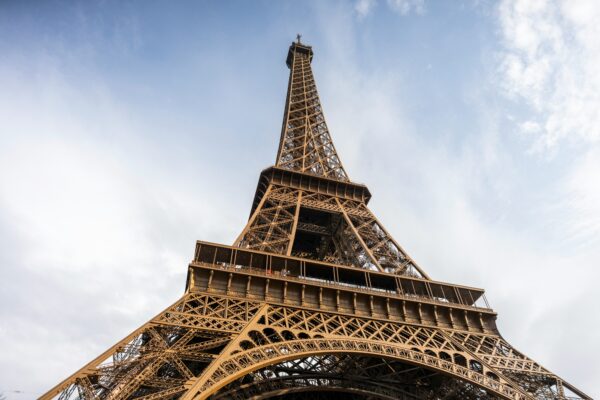
Hidden Gems in France First-Time Tourists Often Miss
France’s reputation as a top tourist destination is built on world-renowned landmarks like the Eiffel Tower, the Louvre, and the Palace of Versailles. These iconic sites draw millions every year, but for travelers looking to delve deeper into French culture and uncover authentic experiences, the real magic often lies off the beaten path.
First-time visitors frequently overlook countless hidden gems that reveal the country’s rich diversity—from quaint medieval villages to breathtaking natural landscapes and centuries-old traditions preserved in peaceful corners of the country.
One of the most enchanting hidden gems is the village of Eguisheim, nestled in the Alsace region near the German border. This picturesque town is famous for its concentric circles of colorful half-timbered houses, narrow winding cobblestone streets, and lush flower displays bursting with vibrant colors.
Eguisheim is also part of the Alsace wine route, offering visitors the opportunity to taste exceptional local wines directly from family-run vineyards. Unlike bustling cities, Eguisheim’s intimate atmosphere invites you to slow down and savor simple pleasures, such as chatting with friendly locals at a cozy café or wandering through artisan shops filled with handmade crafts.
Heading south, the Calanques National Park near Marseille offers a stunning natural contrast to the more commercialized French Riviera. The park’s dramatic white limestone cliffs plunge steeply into the deep blue Mediterranean Sea, creating hidden turquoise coves accessible only by foot or boat.
Hiking trails weave through fragrant pine forests and rugged terrain, rewarding adventurers with spectacular panoramic views. Many tourists flock to nearby beaches but miss out on the tranquility and untouched beauty of the Calanques, where you can swim, kayak, or simply bask in nature’s serenity.
Further inland, the Drôme Provençale region offers an idyllic countryside escape characterized by rolling lavender fields, sunflowers, and quaint medieval villages like Nyons and Grignan. This area is a haven for food lovers and those craving a slower pace. Weekly markets burst with local produce such as olives, honey, truffles, and artisanal cheeses.
The region’s charm lies in its timelessness—exploring ancient castles, Roman ruins, and quiet country roads provides a glimpse into rural French life that remains largely unchanged. Seasonal festivals celebrating harvests, crafts, and regional traditions bring communities together and provide a rich cultural experience for visitors.
Other hidden gems include Carcassonne, a spectacular fortified town whose massive ramparts evoke medieval tales, and the Île de Ré, a peaceful Atlantic island known for its salt marshes, cycling trails, and charming fishing villages. The prehistoric cave paintings of Chauvet-Pont-d’Arc offer a rare glimpse into early human art and history, far from the crowds of more famous sites.
Exploring these lesser-known destinations often means more affordable accommodations, quieter streets, and more genuine interactions with locals. Many of these towns host seasonal festivals, traditional craft workshops, and local markets where visitors can participate in authentic cultural activities, such as wine harvests or cheese-making. These experiences provide a richer, more personalized understanding of France’s diverse heritage.
For first-time tourists willing to venture beyond the usual itinerary, these hidden gems offer a unique and memorable perspective on the country. They highlight the blend of history, nature, and culture that makes France so beloved worldwide but often missed by those rushing from one major landmark to the next. By slowing down and seeking out these offbeat treasures, travelers create stories and memories that last long after the trip ends.
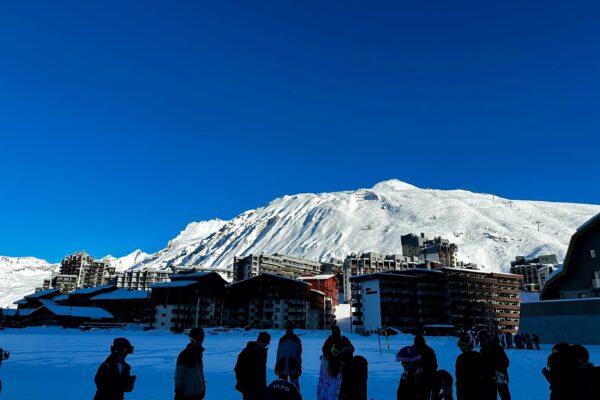
Seasonal Travel Guide: When to Visit France
France is a country where each season paints a different picture, shaping the culture, landscape, and activities you can enjoy. Understanding the seasonal rhythms of France can help travelers plan trips that align perfectly with their interests, whether that means witnessing blossoming gardens in spring, basking in summer festivals, savoring harvests in autumn, or skiing in the snowy Alps during winter. Here’s a detailed look at what each season offers, helping you pick the best time to visit France.
Spring (April to June) is arguably one of the most delightful times to visit. As the cold winter fades, gardens and parks burst into bloom, filling cities and countryside with color and fragrance. Famous spots like Monet’s garden in Giverny come alive with water lilies, tulips, and wisteria. The weather is pleasantly mild, with temperatures typically ranging from 12 to 20°C (54 to 68°F), perfect for exploring on foot or bike.
Tourist crowds are smaller than in summer, allowing a more relaxed experience in popular cities such as Paris, Nice, or Lyon. Spring also marks the start of many festivals, from jazz concerts to art fairs, bringing vibrant local culture to life. For wine lovers, spring is an excellent season to visit vineyard regions like Bordeaux and Champagne before the busy harvest period, enjoying tastings and tours in peaceful surroundings.
Summer (July and August) is peak tourist season across France. Long days and warm weather—often reaching highs of 25 to 30°C (77 to 86°F) or more—invite visitors to enjoy beaches on the Mediterranean and Atlantic coasts, outdoor dining, and lively festivals. Bastille Day on July 14th is the country’s biggest celebration, featuring parades, fireworks, and street parties nationwide. Other notable summer events include music festivals like Festival d’Avignon and Les Vieilles Charrues.
However, summer also brings the largest crowds and highest prices, especially in Paris and coastal resorts such as Nice, Cannes, and Saint-Tropez. Many locals take their holidays in August, leading to some shops and restaurants closing temporarily. Early reservations are essential during this time. If you thrive in bustling atmospheres and want to experience French culture at its most festive, summer is your season.
Autumn (September to November) is often described as France’s most romantic season. As temperatures cool to a comfortable 10-18°C (50-64°F), the countryside transforms with golden, red, and amber foliage. Wine regions like Burgundy, Beaujolais, and the Loire Valley celebrate the grape harvest with festivals, tastings, and traditional feasts. The culinary calendar highlights seasonal delights like mushrooms, chestnuts, and truffles, making it a foodie’s paradise.
Tourist numbers decrease, which means shorter queues, lower hotel rates, and a more intimate experience at museums and landmarks. The crisp air and stunning landscapes also make autumn ideal for outdoor activities such as hiking and cycling. Cities maintain their charm without the summer rush, providing a perfect balance of culture and calm.
Winter (December to February) in France offers a completely different, yet equally magical experience. The French Alps and Pyrenees become winter sports meccas, attracting skiers and snowboarders from around the world. Resorts like Chamonix, Val d’Isère, and Méribel provide world-class facilities amid stunning mountain scenery. Urban areas, especially Paris, glow with festive lights, Christmas markets, and ice skating rinks.
Warm up in cozy cafés with seasonal specialties like raclette, fondue, and hot chocolate. Winter also tends to be the low season for tourism (except ski regions), so travelers can find better deals on flights and accommodation. Although the weather can be cold and rainy in many parts of the country, the holiday atmosphere and winter sports opportunities make it a special time to visit.
In conclusion, the best season to visit France depends largely on what you want to experience. Spring and autumn are ideal for travelers seeking mild weather, fewer crowds, and cultural richness. Summer offers the liveliest atmosphere, perfect for festivals and beach holidays. Winter draws outdoor enthusiasts and those enchanted by holiday traditions. Each season reveals a different facet of France’s charm, inviting visitors to return again and again to discover something new.
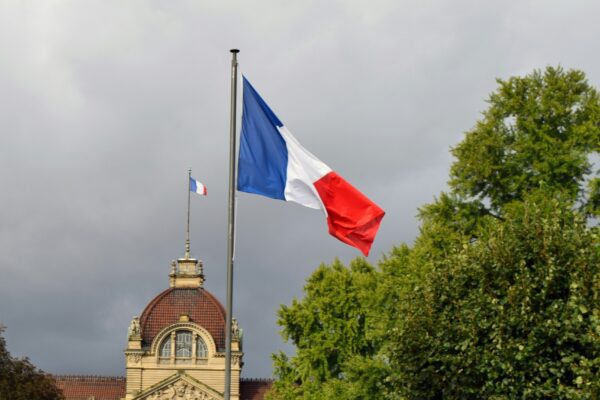
Common Tourist Scams in France and How to Avoid Them
France’s popularity with travelers means it unfortunately attracts its share of scams aimed at tourists. While the country is generally safe, being informed and vigilant can help you avoid unpleasant situations that might spoil your trip. This guide covers common scams you might encounter and practical tips to keep yourself safe.
Pickpocketing is the most widespread scam targeting tourists, especially in large cities like Paris, Nice, and Lyon. Crowded locations such as the Paris Metro, Sacré-Cœur, the Eiffel Tower, and popular shopping districts are hotspots. Pickpockets often work in groups employing distraction tactics—someone might bump into you or ask for directions while another steals your wallet or phone.
To minimize risk, keep valuables in zipped, front-facing bags, avoid carrying too much cash, and consider anti-theft backpacks or money belts. Be especially alert in busy metro cars, tourist buses, and crowded squares. If traveling with a backpack, wear it on your front in crowded spaces.
Another common tactic is the “friendship bracelet scam,” where a person approaches tourists in busy areas, offering to tie a bracelet on their wrist. Once the bracelet is on, they demand payment, often aggressively. It’s best to firmly decline and keep walking. Similarly, fake petitioners or charity collectors often approach tourists with clipboards, distracting them while accomplices steal belongings.
Taxi scams are also a concern. Some unlicensed drivers might overcharge or take unnecessarily long routes. Always use official taxis with a lit “Taxi Parisien” sign or book rides through reputable apps like Uber or Bolt. Confirm that the meter is running or agree on a fare before starting the ride. Avoid hailing taxis from the street in unfamiliar cities and never get into vehicles without official markings.
Restaurants in tourist-heavy neighborhoods sometimes add hidden fees or inflate bills. Always ask for a menu with prices before ordering and check your bill carefully. Avoid places that aggressively approach you off the street or advertise fixed-price menus with poor reviews.
Currency exchange scams happen too—never exchange money with street vendors or in unofficial places. Use banks or authorized exchange offices and be aware of current exchange rates. ATMs inside bank branches are safer and often have better rates.
Credit card fraud can occur, so always monitor your card statements and use chip-enabled cards. Avoid using public Wi-Fi for sensitive transactions unless connected through a trusted VPN.
To stay safe, trust your instincts, keep valuables secure, and be wary of overly friendly strangers. Planning ahead, such as booking tickets and transportation online from official sources, also reduces the chances of scams.
France is a wonderful destination, and taking a few precautions can ensure your trip remains enjoyable and hassle-free.

Tech Hacks for France Travel
Technology has revolutionized travel, and with a few smart tools and strategies, your trip to France can become smoother, safer, and more enjoyable. From navigating cities and communicating to managing money and staying secure, these tech hacks help solve common travel challenges.
Navigation apps are essential. While Google Maps is a staple, consider downloading Citymapper, which offers detailed public transport routes and real-time updates for metros, buses, and trains in cities like Paris, Lyon, and Marseille. Offline map apps like Maps.me or saving offline Google Maps areas let you access directions without using data, ideal for rural areas or limited connectivity.
Language barriers can be tackled easily with Google Translate, which now offers instant camera translation for menus, signs, and printed text—especially useful in smaller towns where English is less common. Download offline language packs so you can use the app without internet.
For money management, currency conversion apps like XE Currency help keep track of real-time exchange rates. Most places accept contactless payments, so setting up Apple Pay or Google Pay reduces the need to carry cash. Always notify your bank about your travel plans to avoid card blocks.
Booking in advance through official websites or apps can save time and money. For instance, use the SNCF app to book train tickets, or Museumpass apps to skip lines at museums. E-tickets reduce paper waste and speed up entry.
Using a VPN (Virtual Private Network) on public Wi-Fi networks protects your personal information by encrypting your connection, which is crucial when accessing sensitive accounts like online banking.
Travel planning apps such as TripAdvisor and Yelp help find top-rated restaurants, attractions, and hotels with user reviews. Many have offline capabilities to access info without internet.
Don’t forget to bring a portable charger/power bank to keep your devices powered during long days. Buying a local SIM card or activating an international roaming plan ensures reliable internet access across the country.
Embracing these tech hacks not only enhances convenience but also helps you feel confident and connected, leaving more time to focus on enjoying the incredible sights and culture of France.
Frequently Asked Questions
1. What is the best way to get around French cities as a first-time visitor?
Using public transportation like metros, trams, and buses is often the easiest and most affordable way. Cities like Paris have extensive metro networks, and bike-sharing services like Vélib’ offer a fun alternative for short trips.
2. How can I avoid long lines at popular attractions in France?
Book tickets online in advance whenever possible. Many major sites offer skip-the-line tickets or timed entries. Visiting early in the morning or late in the afternoon can also help avoid crowds.
3. Should I carry cash or use cards while traveling in France?
Cards are widely accepted, especially contactless payments, but it’s useful to carry some cash (euros) for small shops, markets, or rural areas. Always notify your bank about your travel dates to avoid card issues.
4. What apps are essential for traveling in France?
Helpful apps include Google Maps (offline maps), Citymapper (public transport), Google Translate (language help), SNCF (train tickets), and XE Currency (currency conversion).
5. How can I avoid common tourist scams in France?
Stay vigilant in crowded areas, keep your belongings secure, decline unsolicited offers like friendship bracelets, and use only licensed taxis or official ride apps.
6. Is it better to rent a car when exploring France outside cities?
Renting a car can be convenient for rural regions and vineyards but remember that trains and buses serve many areas. Also, driving in French cities can be stressful and parking expensive.
7. When is the best time to visit France to avoid crowds and high prices?
Spring (April to June) and autumn (September to November) are ideal, with pleasant weather, fewer tourists, and often better prices compared to busy summer months.
8. How can I stay connected to the internet while traveling in France?
You can buy a local SIM card at the airport or in stores, use portable Wi-Fi devices, or rely on free Wi-Fi available in many cafés, hotels, and public areas.
9. What’s the best way to handle language barriers in France?
Learn basic French phrases, use translation apps like Google Translate, and speak slowly and politely. Many people in tourist areas speak some English.
10. Are there any eco-friendly travel tips for visiting France?
Yes! Use public transport or bike rentals, choose accommodations with sustainable practices, avoid single-use plastics, and support local businesses and markets to reduce your carbon footprint.


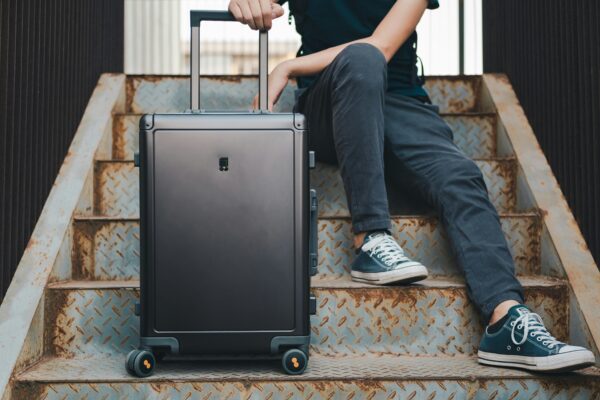

2 comments. Leave new
In my opinion the theme is rather interesting. Give with you we will communicate in PM.
Every sentence feels like a carefully chosen stone on a path of wisdom — sturdy, beautiful, and meaningful.